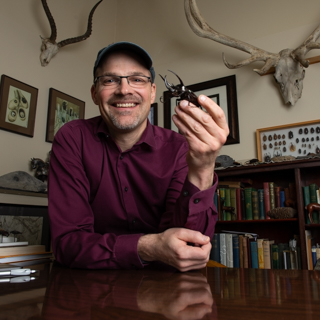such as the enormous horns and exaggerated mandibles of scarab beetles. We combine approaches from behavioral ecology, genetics, phylogenetics, genomics, and developmental biology to understand how evolution has shaped these bizarre structures. Current projects focus on the Japanese rhinoceros beetle (Trypoxylus dichotomus), including an examination of the genetic structure and phylogeographic history of populations, explorations into the genetic basis of rapid recent changes in relative horn size, field studies measuring selection acting on these weapons in the wild, and a blend of lab and field studies examining the relative importance of male competition and female choice in this system. Finally, we are generating a phylogeny for the subfamily of rhinoceros beetles (Dynastinae) using next-generation sequencing. We will use this tree to reconstruct the evolution of exaggerated weapons in this rich, diverse, and stunning clade of huge, charismatic insects.
Graduate students in this lab often develop their own systems, and recent student projects addressed a breadth of topics revolving around sexual selection, behavior, genetics, and evolution in Sagra beetles, and in the stick and leaf insects (Phasmatidae).
We actively communicate the excitement and relevance of science, and in particular evolutionary biology, to broad audiences through documentary films, books, and the popular press, contributing to public understanding of animal diversity and morphological evolution (see Media and Outreach).
